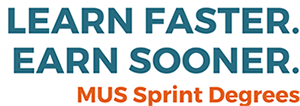
FAFSA Completion Month
FAFSA Know How
Although college prices continue to rise, they may not be as high as you might think. And few students or families are expected to pay, out of pocket, the full two- or four-year price of attendance. So don't let the apparent cost turn you away.
Your FAFSA helps to determine what financial aid you qualify for. Financial aid is available to most students and comes in three forms:
- Grants and Scholarships – Money that is not need to be paid back
- Loans (federal/state) – Money that is paid back over a period of time
- Earned Financial Aid – Money awarded through military service or work-study programs (students must qualify)
Most students receive a combination of these in what's called a financial aid package that is put together by the school the student plans to attend or is attending.
Financial aid is intended to fill the gap between the actual price of the school and what students and their families can realistically contribute from savings and income to pay for this education. This leftover is called financial need. It allows students to attend schools that they otherwise might not be able to afford. The student, the student's family, and taxpayers (through financial aid) share in the responsibility of paying for higher education.
FAFSA
The Free Application for Federal Student Aid, FAFSA, is the form you will want to fill out to get any financial aid from the federal government to help pay for college. Each year, over 13 million students who file the FAFSA get more than $120 billion in grants, work-study, and low-interest loans from the U.S. Department of Education. The FAFSA is used to determine how much a student and their family is expected to contribute for the student's education. The difference between the total cost of attendance and the family contribution is your financial need.
Lots of states and colleges also use the FAFSA to determine which students get state financial aid—and how much they’ll get.
After your need is determined you will receive a "financial aid package" from the colleges you have applied to for you to review. This package consists of any Federal Pell Grants, state of Montana opportunities and any other financial aid offered by colleges and universities you are eligible to receive. Your financial aid may also be supplemented with loans and work study funds.
-
The most important advice about completing the Free Application for Federal Student Aid (FAFSA) is to READ ALL INSTRUCTIONS CAREFULLY. Follow directions carefully as you complete your application; any errors will cause delays in processing or even the loss of financial assistance. See our helpful tips below.
You can complete the FAFSA:
- Online using FAFSA on the Web, or
- by completing a paper application.
- The FAFSA is also available in Spanish.
Be aware that the FAFSA is available for completion beginning October 1. The Montana University System has a December 1 initial deadline for FAFSA completion. Students and families are welcome to submit a FAFSA after December 1, but priority for awards will be given to those who have submitted the FAFSA by December 1.
Information you need on hand before you start:
If you have the following documents on hand before you start you'll complete the application more quickly. Completing the FAFSA requires similar information requested on your federal income tax forms. It's helpful to complete your taxes and have them available when completing the financial aid application. The list below seems long, but once in hand, you should be able to complete the FAFSA in approximately 30 minutes.
You will need the following information to complete a FAFSA;
- Your Social Security card and driver's license.
- Your parents' Social Security number.
- W-2 Forms or other records of income earned.
- Your (and your parents, if you’re dependent) Federal Income Tax Return.
- Records of other untaxed income received such as child support received, payments to tax-deferred pension plans, veteran's benefits, or military or clergy allowances.
- Current bank statements and records of stocks, bonds, and other investments.
- Business or farm records, if applicable.
- Your alien registration card (if you are not a U.S. Citizen)
At first glance, financial aid may seem confusing. However, by doing some simple research, you can understand the programs and learn how to apply for aid. There are several key people who can advise you on the best way to meet college expenses:
High School Counselors
High school counselors receive information and training on financial aid programs and can help students begin pursuing sources of assistance.
Financial Aid Offices in Montana
Financial aid offices at the school you or your student wants to attend (or is attending) are the best single source of information on the types of aid available to you or your student's needs. These aid offices usually have some degree of discretion in assessing and making judgments on individual needs of students and may consider special circumstances affecting a student's financial need.
The Financial Aid Office serves many functions:
- Distributes and receives applications
- Determines each student's financial need
- Develops financial aid packages
- Distributes financial aid
- University of Montana | Financial Education Program – Empowering the UM community to make informed financial choices and take action
to improve their present and long-term financial well-being.
-
Montana State University | Office of Financial Education - The MSU Office of Financial Education provides students with resources to build understanding and make informed decision regarding money management before, during and after college.
- Financial Aid Regional Contacts Map






